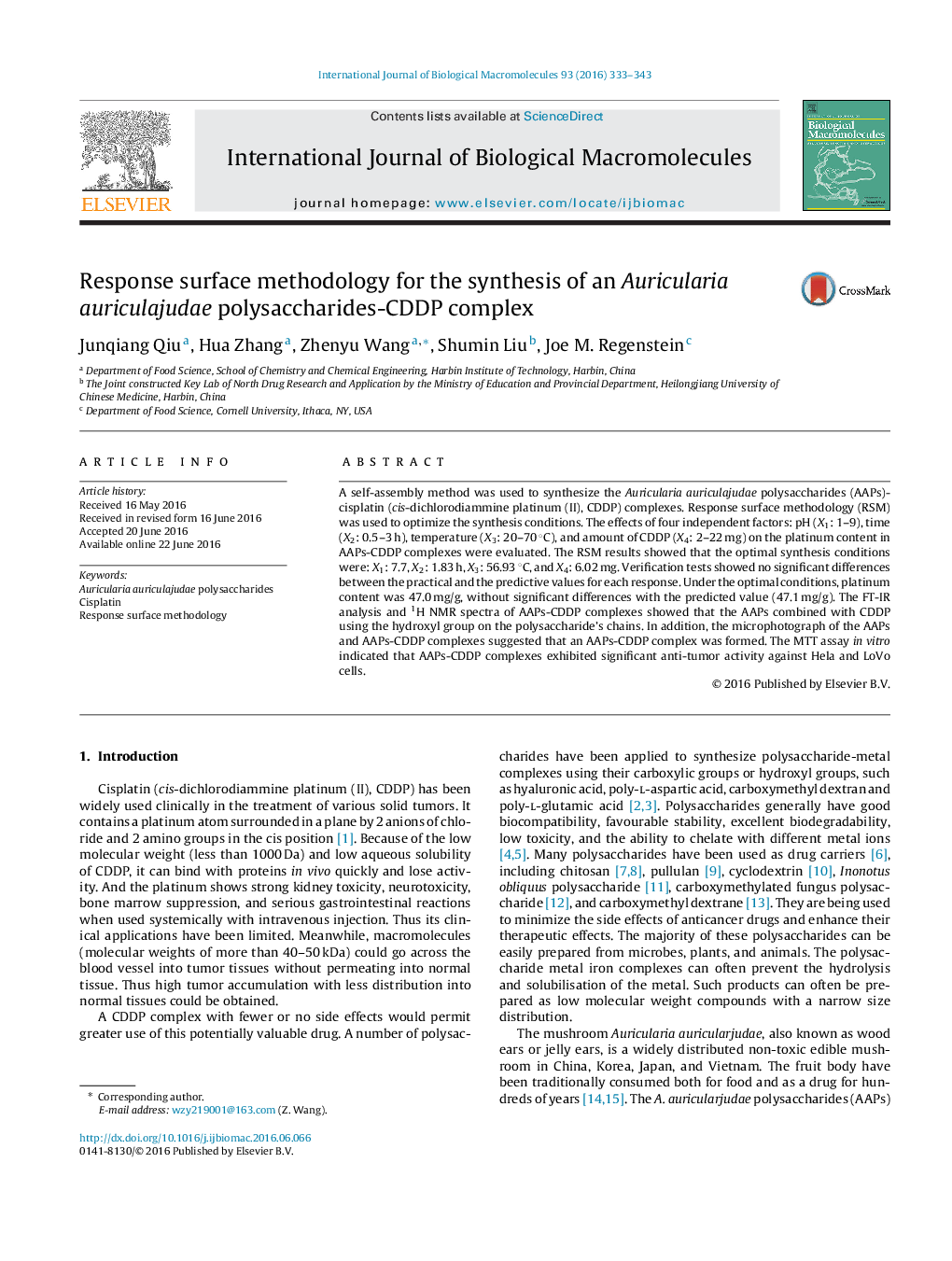| Article ID | Journal | Published Year | Pages | File Type |
|---|---|---|---|---|
| 1985561 | International Journal of Biological Macromolecules | 2016 | 11 Pages |
•The maximum platinum content of 47.0 mg/g was obtained under the optimal synthesis condition using RSM.•The hydroxyl groups of AAPs were combined with CDDP, which can be confirmed by FTIR.•AAPs-CDDP complexes exhibited remarkable anti-tumor activity in vitro against Hela and LoVo cells.
A self-assembly method was used to synthesize the Auricularia auriculajudae polysaccharides (AAPs)-cisplatin (cis-dichlorodiammine platinum (II), CDDP) complexes. Response surface methodology (RSM) was used to optimize the synthesis conditions. The effects of four independent factors: pH (X1: 1–9), time (X2: 0.5–3 h), temperature (X3: 20–70 °C), and amount of CDDP (X4: 2–22 mg) on the platinum content in AAPs-CDDP complexes were evaluated. The RSM results showed that the optimal synthesis conditions were: X1: 7.7, X2: 1.83 h, X3: 56.93 °C, and X4: 6.02 mg. Verification tests showed no significant differences between the practical and the predictive values for each response. Under the optimal conditions, platinum content was 47.0 mg/g, without significant differences with the predicted value (47.1 mg/g). The FT-IR analysis and 1H NMR spectra of AAPs-CDDP complexes showed that the AAPs combined with CDDP using the hydroxyl group on the polysaccharide’s chains. In addition, the microphotograph of the AAPs and AAPs-CDDP complexes suggested that an AAPs-CDDP complex was formed. The MTT assay in vitro indicated that AAPs-CDDP complexes exhibited significant anti-tumor activity against Hela and LoVo cells.
